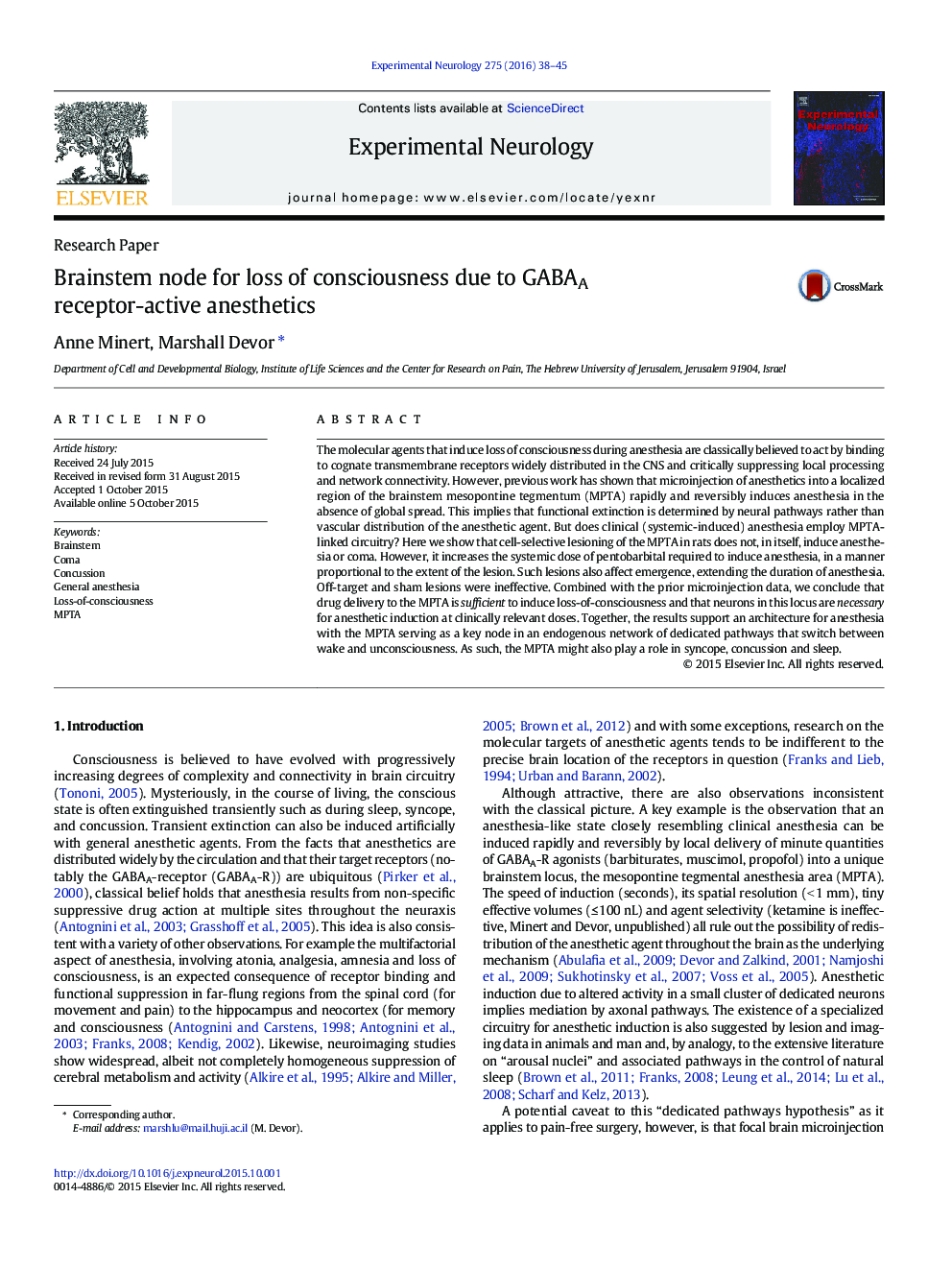| Article ID | Journal | Published Year | Pages | File Type |
|---|---|---|---|---|
| 3055351 | Experimental Neurology | 2016 | 8 Pages |
•Localized brainstem microinjection of GABAA-R agonists induces loss of consciousness.•Lesioning this locus extends the duration of anesthesia, but does not induce coma.•Locus-specific lesions render animals relatively insensitive to systemic anesthetics.•Systemic anesthetics may act, at least in part, by engaging this locus.•The locus is a node in a network of dedicated pathways able to switch brain state.
The molecular agents that induce loss of consciousness during anesthesia are classically believed to act by binding to cognate transmembrane receptors widely distributed in the CNS and critically suppressing local processing and network connectivity. However, previous work has shown that microinjection of anesthetics into a localized region of the brainstem mesopontine tegmentum (MPTA) rapidly and reversibly induces anesthesia in the absence of global spread. This implies that functional extinction is determined by neural pathways rather than vascular distribution of the anesthetic agent. But does clinical (systemic-induced) anesthesia employ MPTA-linked circuitry? Here we show that cell-selective lesioning of the MPTA in rats does not, in itself, induce anesthesia or coma. However, it increases the systemic dose of pentobarbital required to induce anesthesia, in a manner proportional to the extent of the lesion. Such lesions also affect emergence, extending the duration of anesthesia. Off-target and sham lesions were ineffective. Combined with the prior microinjection data, we conclude that drug delivery to the MPTA is sufficient to induce loss-of-consciousness and that neurons in this locus are necessary for anesthetic induction at clinically relevant doses. Together, the results support an architecture for anesthesia with the MPTA serving as a key node in an endogenous network of dedicated pathways that switch between wake and unconsciousness. As such, the MPTA might also play a role in syncope, concussion and sleep.
